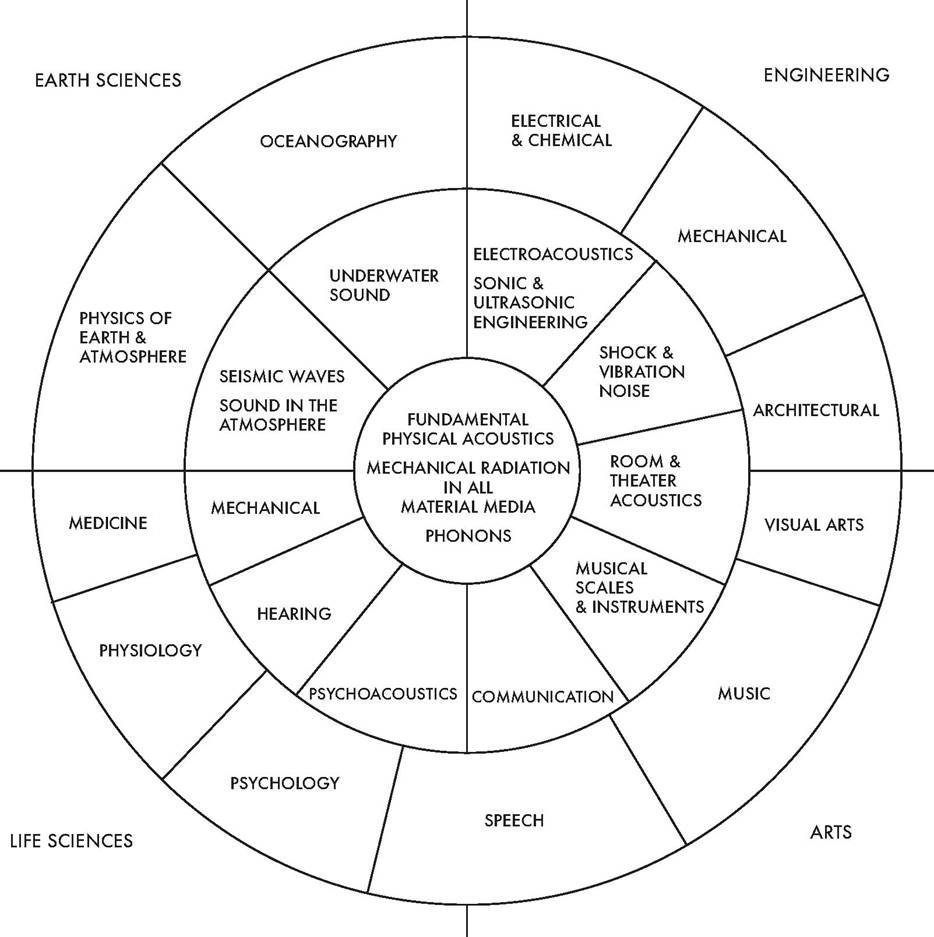
When most people hear the word acoustics they think of acoustic guitars or concert halls, but the field of acoustics is actually much larger than internet covers of radio songs and plush theatre seating. The word acoustics comes from a Greek word akoustikos which means “of or for hearing”. The contemporary definition of acoustics is broader than the original Greek. Today, acoustics is the science of sound and vibration, which includes topics like noise control, ear health, SONAR, speech, structural vibration, seismic activity, ultrasound imaging, communication devices, and of course, music.
With so many different fields interested in sound and vibration, it can be difficult to define the breadth of acoustics. However, in 1964 physics professor Robert Bruce Lindsay published a paper on what he called the Wheel of Acoustics—a useful graphic representation of the many sub-areas of acoustics.

He created a pie chart that roughly divides acoustics into four main slices: earth sciences, engineering, life sciences, and arts. The wheel’s outer ring shows general fields in acoustics and the inner ring shows typical subdivisions. The center of the wheel contains fundamental physical principles that form a basis for all work in acoustics.
Lindsay’s wheel highlights a couple of points. First, acoustics is a broad, interdisciplinary topic. Often, professionals in acoustics collaborate with experts outside of their area of expertise to work on projects. Additionally, the when most people see the wheel for the first time, they are shocked to see that it includes so many topics. Lindsay’s wheel of acoustics emphasizes that, while we may not be able to see sound, we all care about the way acoustics interacts with our lives—from life-saving ultrasound imaging to our favorite noise cancelling headphones.
Additional resources:
https://en.wikipedia.org/wiki/Acoustics
https://en.wikipedia.org/wiki/Robert_Bruce_Lindsay
JUN
2019

About the Author: